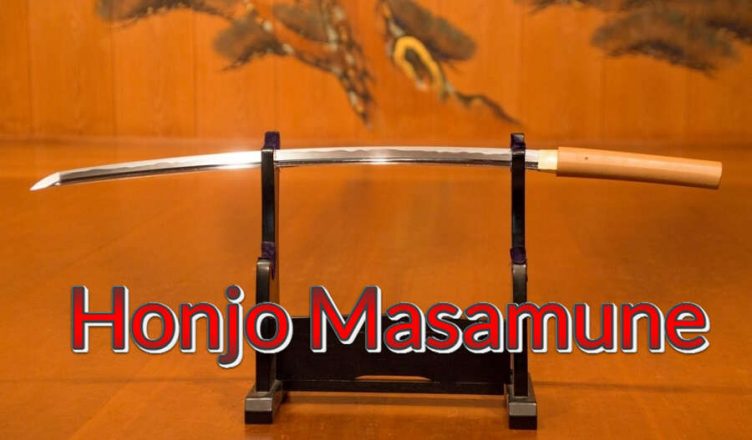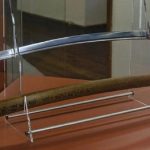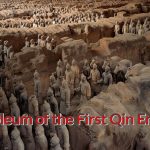In the realm of Japanese swordsmithing, one name stands out as a legend: Honjo Masamune. Crafted by the master swordsmith Masamune in the late 13th century, the Honjo Masamune is revered in Japan as the ultimate samurai sword and is considered a national treasure. Its origins lie in a historical necessity – the Mongol invasion of Japan in the Kamakura period. The ruling Shoguns turned to Masamune to redesign the Japanese sword, seeking a weapon capable of withstanding the toughened Mongol armor.
Masamune’s ingenuity manifested in a blade composed of over 30,000 layers of red-hot high carbon steel, meticulously folded and forged. The result was a sword with distinct properties, where the thin cutting edge served offensively with rigidity and razor sharpness, while the thicker back edge provided flexibility for defensive maneuvers. This masterpiece, the Honjo Masamune, exemplified perfection in samurai sword craftsmanship.
Over the centuries, Masamune’s swords gained mythical status, with tales of their discerning and honorable nature. The Honjo Masamune, in particular, became a symbol of absolute power. It entered recorded history when, in the 16th century, General Honjo Shigenaga claimed victory over an enemy wielding Masamune’s masterpiece. From then on, the sword bore his name and became a highly coveted and valuable item.
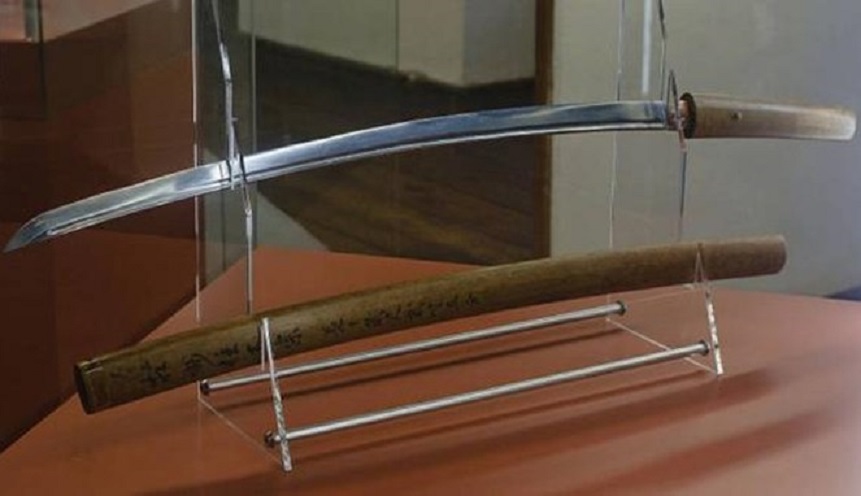
In the turbulent times of Japanese history, the Honjo Masamune played a pivotal role, symbolizing power and prestige. Passed down through generations, it found its way to the Tokugawa Shogunate, marking an era of 250 years of peace in Japan. Even after the fall of the Tokugawas in 1868, the sword continued to be handed down within aristocratic families until its designation as a Japanese national treasure in 1939.
However, the aftermath of World War II brought a twist to this saga. As the Allied forces, led by General Douglas MacArthur, sought to demilitarize Japan, the once-revered swords faced confiscation and destruction. The fate of the Honjo Masamune took a mysterious turn when it disappeared during this upheaval. Rumors suggest that a U.S. Sergeant named Coldy Bimore took it, but the details remain shrouded in uncertainty.
The legend of the Honjo Masamune persists, transforming the sword from a historical artifact to a mythical treasure. Its whereabouts remain unknown, fueling tales of its possible location and inspiring people to dream of its rediscovery. The lost sword of the samurai, the Honjo Masamune, continues to captivate the imagination, leaving an indelible mark on the rich tapestry of Japanese sword-making history.
Honjo Masamune: The Artisan Journey of a Japanese Historical Titan
Honjo Masamune, one of the most distinguished swordsmiths in Japanese history, led a colorful and illustrious life. His roots trace back to the Japanese countryside between 1264 and 1343, a period marked by the Warring States era. This tumultuous time was characterized by glory, intrigue, and warfare, and it was within this chaos that Honjo Masamune showcased exceptional talent.
Throughout his formative years, Honjo Masamune displayed extraordinary aptitude in the artistry of swords. His craftsmanship transcended the era, earning him renown for his meticulous skill and keen perception of the aesthetics of blades. Despite the challenging and polluted nature of steel production during his time, Masamune managed to create steel of remarkable purity and balance, a rare achievement in those days.

Honjo Masamune’s expertise in swordsmithing not only manifested in his works but also profoundly influenced the entire field of swordcraft. Although his swords often went unsigned, they are hailed as pinnacles of Japanese swordsmith artistry, leaving a lasting impact on subsequent generations of swordsmiths.
Amidst the turmoil of the Warring States era in Japan, Honjo Masamune’s creations became decisive weapons. Particularly in the battles of Kawanakajima, his swords secured victory for the Tokugawa Shogun, ultimately bringing peace to Japan. This positioned his swords as key players in pivotal moments of history, cementing his legacy as a giant in the annals of Japanese swordsmithing.
In summary, Honjo Masamune’s life bore witness to his extraordinary achievements in the art of swordsmithing and his significant contributions to the historical stage. His works not only stood out in artistic value but also left an eternal imprint in the river of history, becoming treasures within Japan’s cultural heritage.
Honjo Masamune: The Artistic Excellence of Blade Crafting
Honjo Masamune’s blades are renowned for their unique and outstanding features, covering various aspects such as blade design, grain pattern, and blade shape. Firstly, his blade design demonstrates ultimate balance and proportion, creating a delicate yet practical appearance. This balance is not only evident in the overall structure of the blade but also in the coordination between the handle and the blade, allowing users to effortlessly manipulate the tool.
Secondly, Honjo Masamune’s swords excel in the grain pattern of the blade. The grain pattern, known as “hamon,” is a regular pattern on the blade, usually forming on the edge. Masamune’s hamon is not only clear but also possesses a unique aesthetic, often exhibiting an oil-painting-like sheen. This distinctive grain pattern not only enhances the visual appeal of the blade but also showcases his mastery of forging techniques.

Finally, the blade shape is another significant feature of Honjo Masamune’s blades. His blades typically present an elegant curve, enhancing both the penetrating power and the overall aesthetic delicacy of the tool. This blade design not only reflects Masamune’s understanding of weapon functionality but also highlights his unique insights into the aesthetics of sword craftsmanship.
Honjo Masamune is regarded as the pinnacle of blade artistry due to his relentless pursuit of craftsmanship. His exquisite forging skills and keen appreciation of sword aesthetics turn each of his blades into a unique piece of art. He not only creates highly functional weapons but also imbues every inch of the blade with the essence of Japanese swordsmithing, elevating it to immortal status in the realm of art.
Honjo Masamune’s Blades: Revered Icons in Japanese History and Culture
Honjo Masamune’s blades hold a prestigious position in Japanese history and culture, influencing the tradition of swordsmithing and maintaining significant importance in the contemporary world of sword collecting. His historical significance and cultural impact can be examined from several perspectives.
Firstly, Masamune’s creations played a pivotal role during crucial junctures in Japanese history, particularly in the Warring States period. His swords became decisive weapons for samurais, contributing to victories, such as in the Battle of Kawanakajima, where they secured triumph for the Tokugawa shogunate, ultimately leading to the unification of Japan. This has elevated his blades to symbols of historical transformation, possessing undeniable historical value.
Secondly, Honjo Masamune’s swordsmithing style had a profound impact on the traditional practices of Japanese swordsmiths. His exquisite craftsmanship and unique insights into the aesthetics of swords became exemplary for later generations of swordsmiths. His works were not only highly revered in his time but also set a pinnacle in the tradition of Japanese swordsmithing, offering significant inspiration to subsequent artisans.

Lastly, in the modern realm of sword collecting, Honjo Masamune’s blades remain highly coveted and valuable items. Despite some pieces being lost after World War II, their distinctive features and artistic value make them sought-after treasures for collectors. Each rediscovered Honjo Masamune blade becomes a significant event in the world of sword collecting, further emphasizing his outstanding status in the realm of sword appreciation.
In conclusion, Honjo Masamune’s blades showcase remarkable historical significance and cultural influence. Serving as witnesses to history, his creations have left an enduring mark on the development of Japanese swordsmithing art, continuing to captivate enthusiasts and collectors in the present day.
Honjo Masamune’s Blades: Collecting and Legacy
The collection and preservation of Honjo Masamune’s blades have been of great significance, finding homes in both museums and private collections. These esteemed artifacts are not only displayed to the public but also meticulously passed down through history.
In various museums worldwide, Honjo Masamune’s blades are proudly showcased, allowing enthusiasts and the general public to marvel at their exceptional craftsmanship. These institutions serve as guardians of cultural heritage, ensuring that the legacy of Masamune’s artistry endures for future generations. The blades’ display in museums provides a unique opportunity for individuals to study and appreciate the historical and artistic value embedded in each piece.
Beyond public exhibitions, many of Honjo Masamune’s blades have found their way into private collections. Wealthy collectors and enthusiasts avidly seek these masterpieces, considering them not only as valuable investments but also as cultural treasures. The private ownership of Masamune’s blades continues the tradition of appreciating and safeguarding these remarkable creations, fostering a sense of responsibility for their preservation.
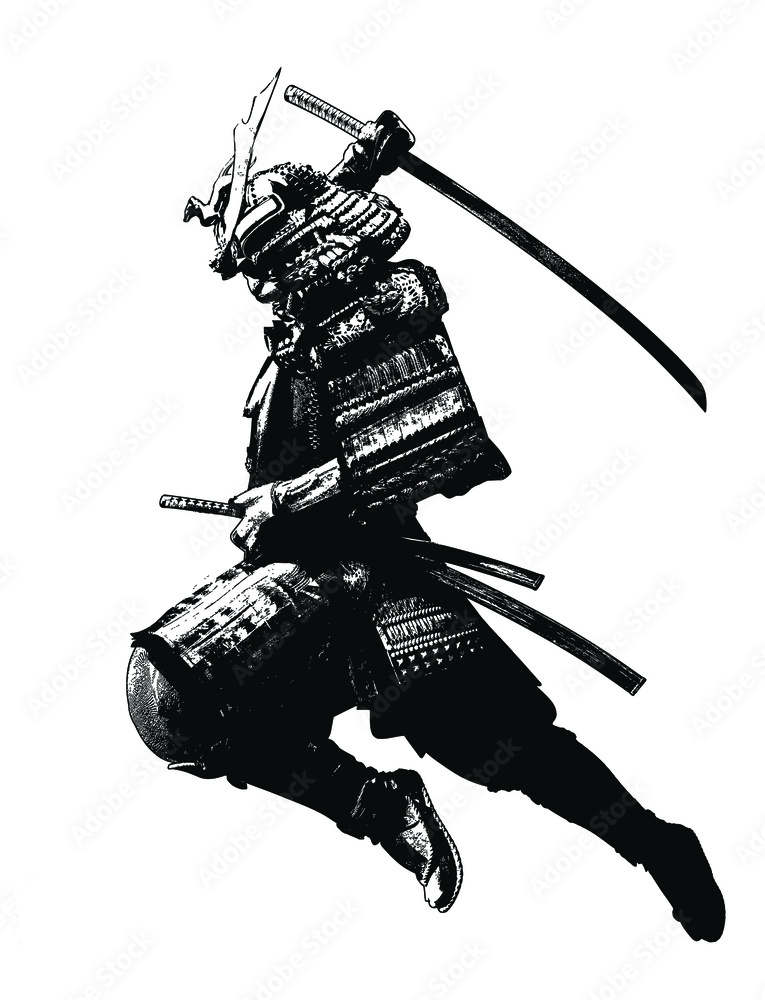
The known provenance of Honjo Masamune’s blades traces a fascinating journey through history. Some blades have changed hands over the centuries, passing through the possession of influential figures, samurais, and collectors. The documented history of ownership adds an extra layer of intrigue to these blades, connecting them to different eras and individuals. The tales of acquisition, inheritance, and rediscovery contribute to the mystique surrounding Honjo Masamune’s legacy.
In conclusion, the collecting and transmission of Honjo Masamune’s blades contribute significantly to the preservation of cultural heritage. Whether on public display in museums or safeguarded within private collections, these masterpieces continue to captivate and inspire, fostering a connection between past and present. Their rich provenance adds a layer of historical depth, ensuring that the legacy of Honjo Masamune endures as an integral part of Japan’s cultural and artistic heritage.
Honjo Masamune’s Lost Legacy: Unraveling the Mystery
The mystery surrounding the loss of some of Honjo Masamune’s works adds a layer of intrigue to his already enigmatic legacy. While many of his blades have survived through the ages, some have regrettably gone missing, and the reasons behind their disappearance are shrouded in historical ambiguity.
One potential factor contributing to the loss of Masamune’s works is the tumultuous history of Japan, particularly during periods of war and upheaval. The chaos of battles, changes in ownership, and the general instability of these times could have led to the misplacement or destruction of some blades. Documentation from these eras might be scarce, making it challenging to trace the paths of individual blades accurately.
Another possible reason is the secretive nature of Masamune’s craftsmanship. The renowned swordsmith often left his blades unsigned, relying on their distinct features and craftsmanship to identify his work. This intentional ambiguity could have led to cases of misattribution or unidentified blades, further complicating efforts to track and preserve his complete body of work.
Historical and literary records provide sporadic glimpses into the history of Masamune’s lost works. Tales of battles, changes in ownership, and the impact of political and social upheavals offer clues to the fate of certain blades. However, the lack of comprehensive records and the passage of time contribute to the mysterious nature of their disappearance.

The loss of Honjo Masamune’s works has had a profound impact on the sword world. It creates a void in the understanding of his complete oeuvre and prevents modern audiences from experiencing the full breadth of his artistic mastery. Additionally, the absence of some blades contributes to the allure of Masamune’s legacy, making the surviving works even more precious and sought after by collectors and enthusiasts.
In conclusion, the mystery of Honjo Masamune’s lost works adds an element of fascination and complexity to the narrative of one of Japan’s greatest swordsmiths. While the specific reasons for their disappearance remain elusive, their absence underscores the challenges in preserving historical artifacts and the enduring allure of Masamune’s enigmatic legacy.
END:
Honjo Masamune, as a masterful artisan in the history of Japanese swordsmithing, has secured an eminent position in the world of sword artistry. His immortal influence spans various dimensions, profoundly shaping the evolution of the craft in historical, cultural, and collectible realms.
First and foremost, the life of Honjo Masamune attests to his extraordinary achievements in the art of swordsmithing and his significant contributions to the historical stage. His swords not only played a crucial role in key battles during the Warring States period but also became symbolic during pivotal moments in Japan’s unification history. His works undeniably serve as witnesses to historical transitions, encapsulating political changes and the enduring spirit of the samurai.
Secondly, the craftsmanship and artistic philosophy of Honjo Masamune have had a profound impact on the traditional art of Japanese swordsmithing. His sword features such as blade design, hamon (temper line) patterns, and blade curvature became paradigms for later swordsmiths, establishing a pinnacle in the art. His blades embody not only practicality but also the utmost pursuit of aesthetic perfection, harmonizing the realms of weaponry and art.
In the contemporary era, Honjo Masamune’s swords hold a superior position in museums and private collections. They have become integral parts of cultural heritage, attracting art enthusiasts and historians alike. However, the partial loss of some of his works poses challenges to comprehensive research, leaving unknown aspects of his artistic contributions.
Finally, for future research in this field, a more in-depth exploration of Honjo Masamune’s life, particularly focused on archaeological and documentary studies of his lost works, is recommended. Leveraging modern technological tools for detailed analysis of his swords could provide deeper insights into his forging techniques and artistic styles. Simultaneously, further efforts should be made to advance the preservation and inheritance of Japanese swordsmithing art, safeguarding this precious cultural legacy.
In conclusion, Honjo Masamune’s significance transcends the pinnacle of Japanese swordsmithing history to become a global treasure in the annals of art history. His influence surpasses temporal boundaries, rendering him a legendary figure in history, forever revered and remembered through his timeless creations.
More UFOs and mysterious files, please check out our YouTube channel: MysFiles
Unsolved Mysteries of the Sanxingdui Site. Is it an alien civilization?
